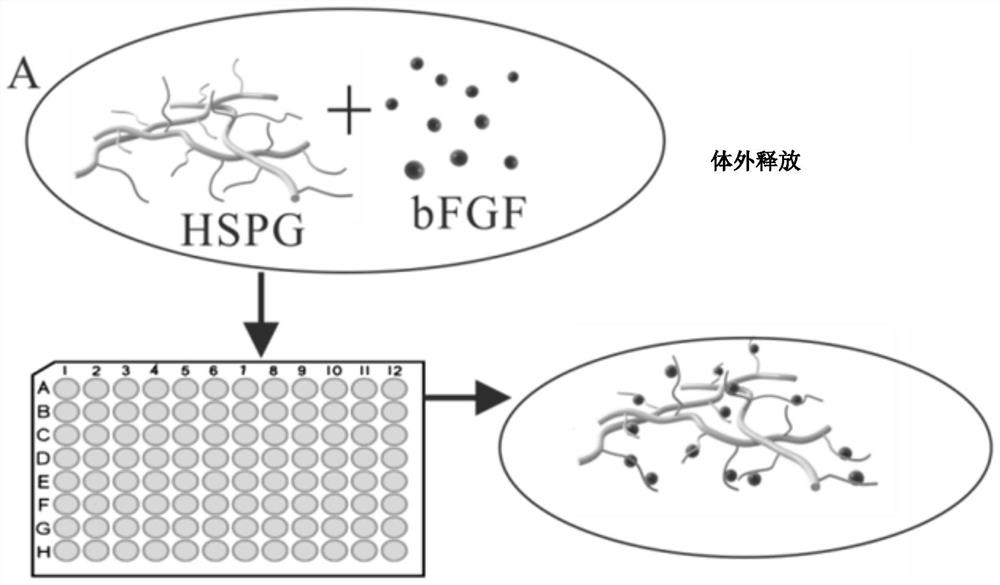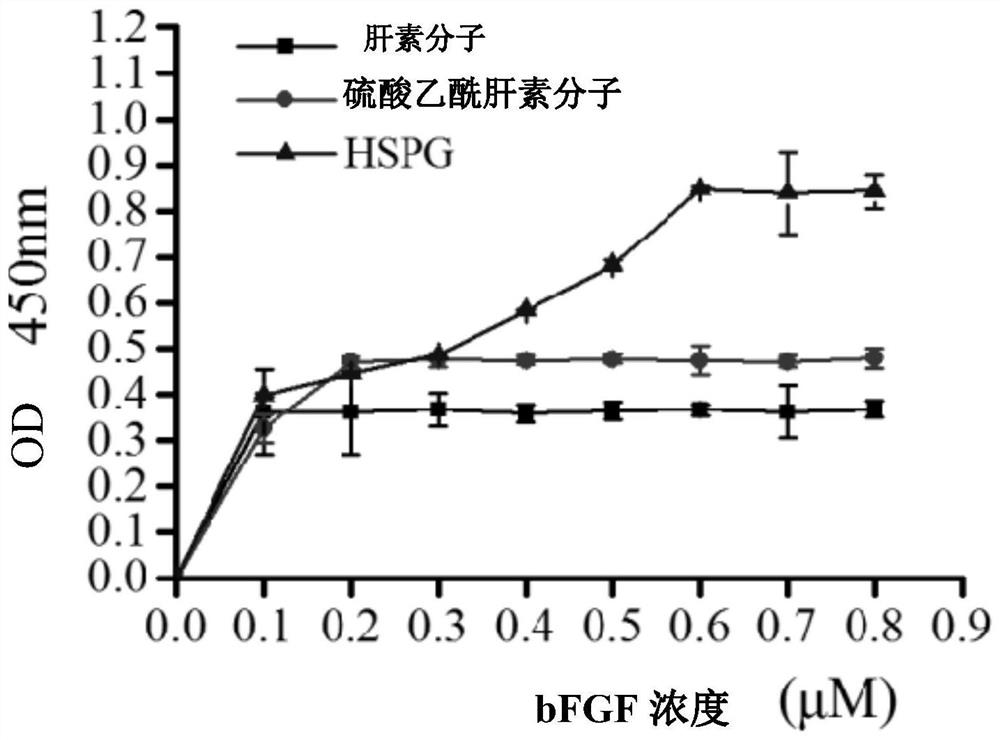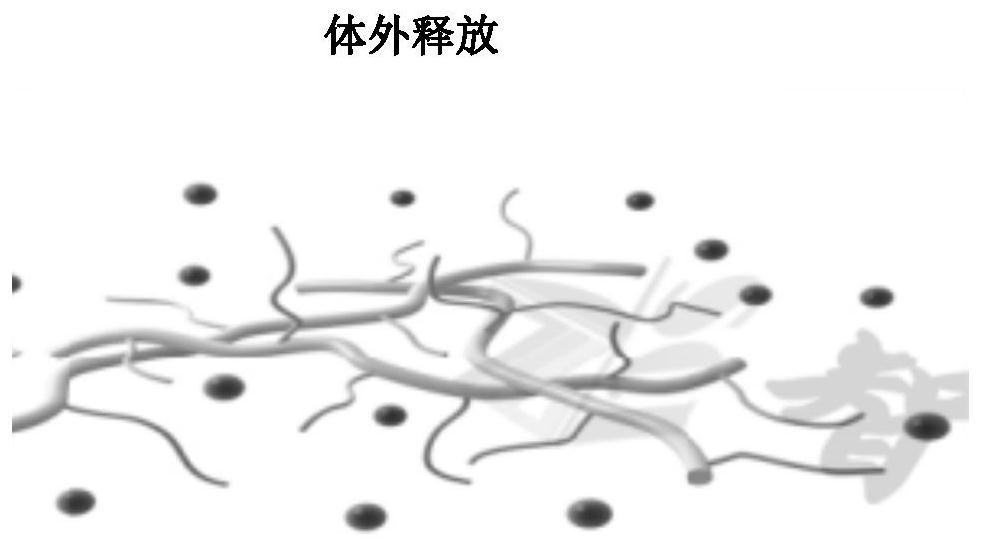Bioactive material capable of efficiently combining and stimulating bFGF activity function and application
A biologically active and functional technology, applied in the field of biomedical materials, to achieve the effect of protecting against hydrolysis by biological enzymes, high efficiency, and promoting biological activity
- Summary
- Abstract
- Description
- Claims
- Application Information
AI Technical Summary
Problems solved by technology
Method used
Image
Examples
Embodiment 1
[0067] Heparan sulfate proteoglycan efficiently binds and releases basic skin growth factor
[0068] 1. Heparan sulfate mucopolysaccharide efficiently binds alkaline skin growth factor
[0069] First, the combination of heparan sulfate proteoglycan HSPG (0.1 μM) and basic skin growth factor molecules in vitro was detected by enzyme-linked immunosorbent immunoassay (ELISA), and heparin molecules and heparan sulfate molecules of the same concentration were used as control materials. About 100 μl of HSPG (0.1 μM) was added to a 96-well microtiter plate (Thermo Fisher, USA) and incubated overnight at 4°C. Equal concentrations of heparin and heparan sulfate (0.1 [mu]M) were added to separate wells for comparison. After plating with HSPG, plates were dried by discarding excess solution, then washed 2-3 times with phosphate-buffered saline (PBS), and blocked with 2.5% bovine serum albumin containing 0.1% Tween 20 for at least 1 hour at 37°C. After blocking and washing (2-3 times), ...
Embodiment 2
[0075] Using HSPG as biological material for cell culture and detection of bFGF biological activity
[0076] 1. Using HSPG as a biomaterial for the culture of cardiomyocytes
[0077] Hearts were isolated from neonatal SD rats within 3 days of age and digested using a mixed collagenase method. Transfer to a cell culture dish for culture, and conduct the following cell adhesion experiments after stable passage for 3 times. In order to study the effect of HSPG on the adhesion ability of cardiomyocytes, 100 μl of HSPG (0.1 μM) was added to a 96-well plate. As a control, 100 μl of PBS was also added to separate wells. Cardiomyocytes were seeded into each well (5×10 4 / well) and incubated at 37°C for 2 hours. Then, the medium was discarded, the cells were washed two to three times with PBS, and fixed with 4% paraformaldehyde. Cells were stained with Hoechst 33342 (Sigma), and fields were randomly selected through six passes using a Nikon (Japan) confocal microscope and Hoechst-...
Embodiment 3
[0085] The delivery of bFGF using HSPG as a biomaterial can promote the recovery of cardiac function after myocardial infarction
[0086] 1. Using HSPG as the delivery carrier of bFGF to inhibit the hyperplasia of scar after myocardial infarction
[0087] Myocardial infarction was induced by ligating the left anterior descending artery of SD rats. After 4 weeks of treatment with HSPG combined with bFGF in the myocardium, the rats were anesthetized by intraperitoneal injection of 4% pentobarbital sodium. Hearts were fixed in 4% paraformaldehyde to prepare paraffin sections of cardiac tissue. Masson's trichrome staining and hematoxylin and eosin staining were used, and the results were used to analyze scar size and infarct wall thickness. The obtained paraffin sections of cardiac tissue were observed and photographed under a microscope, and the obtained pictures were analyzed using Image J pro software. Such as Figure 3A-Figure 3D As shown, histological analysis of the effec...
PUM
 Login to View More
Login to View More Abstract
Description
Claims
Application Information
 Login to View More
Login to View More - R&D
- Intellectual Property
- Life Sciences
- Materials
- Tech Scout
- Unparalleled Data Quality
- Higher Quality Content
- 60% Fewer Hallucinations
Browse by: Latest US Patents, China's latest patents, Technical Efficacy Thesaurus, Application Domain, Technology Topic, Popular Technical Reports.
© 2025 PatSnap. All rights reserved.Legal|Privacy policy|Modern Slavery Act Transparency Statement|Sitemap|About US| Contact US: help@patsnap.com



